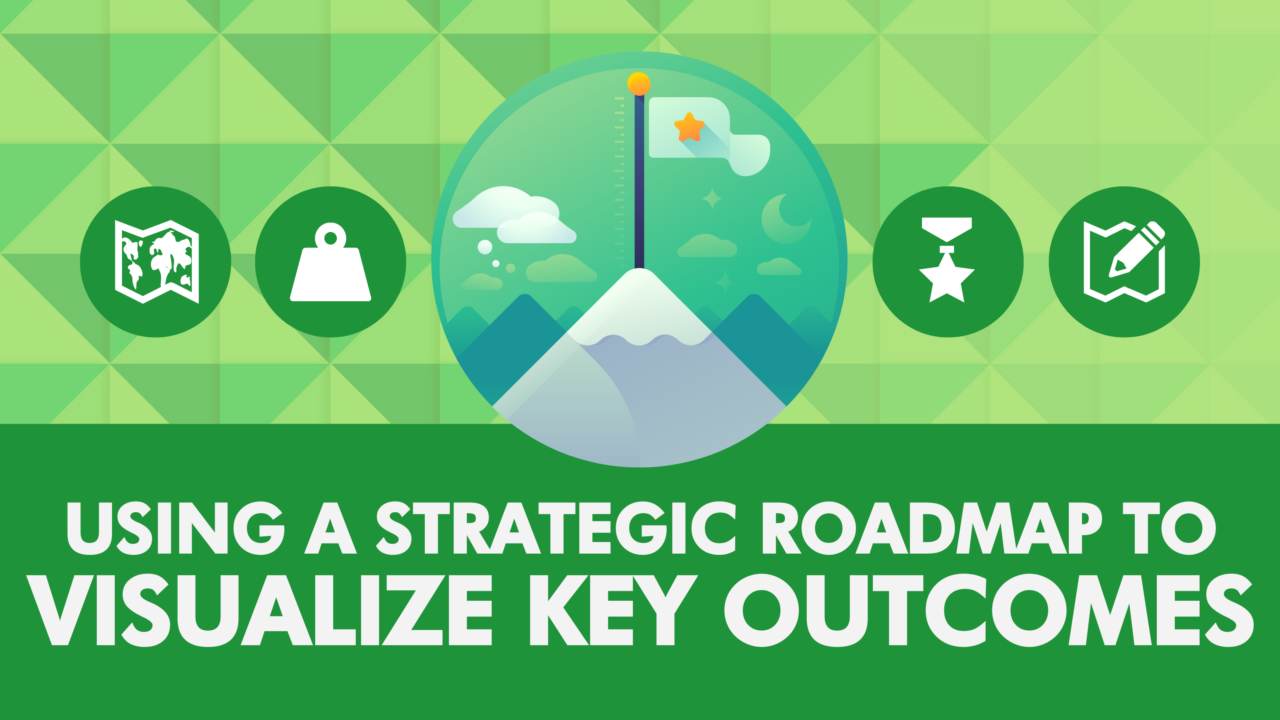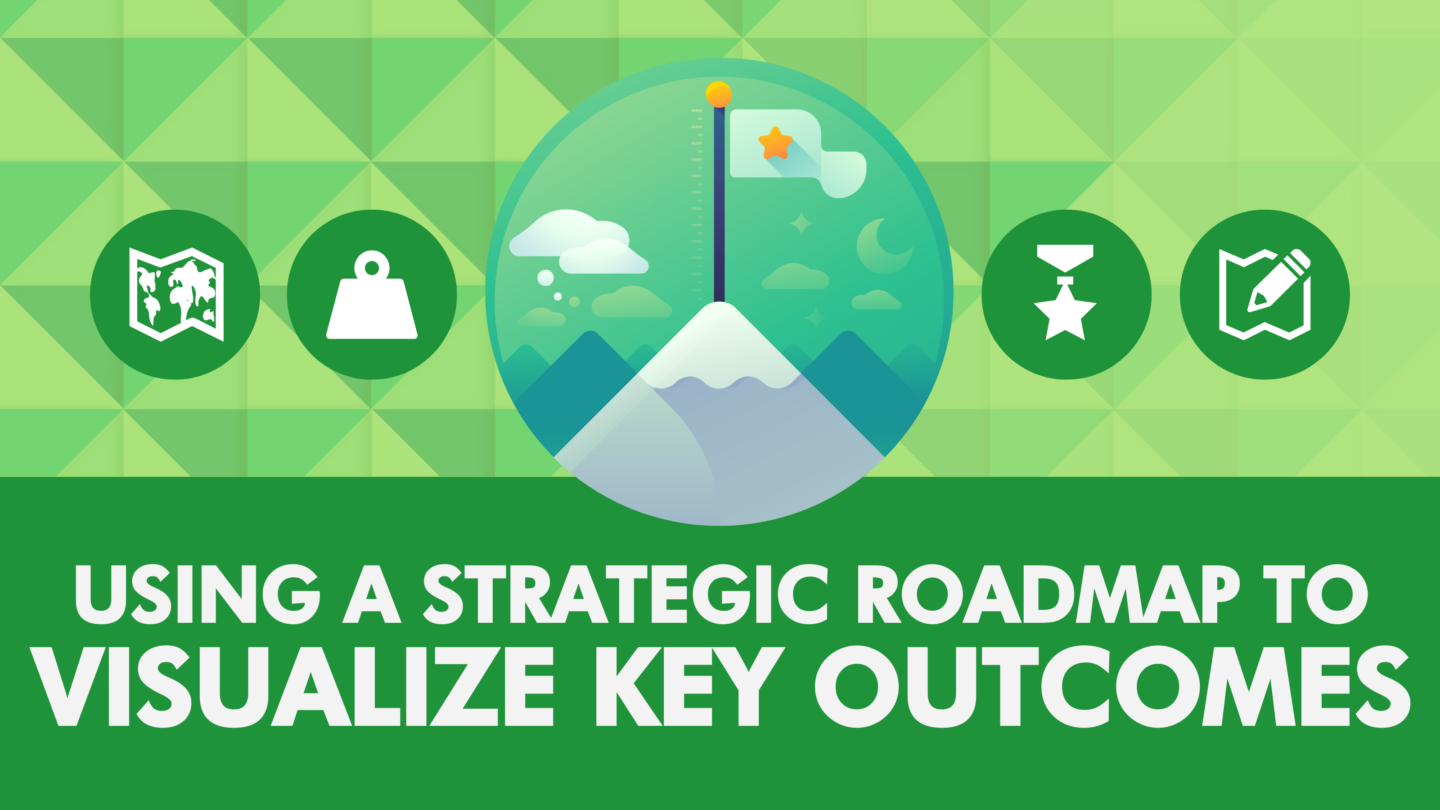
Using a Strategic Roadmap to Visualize Key Outcomes
What is a strategic roadmap?
A strategic roadmap is an in-depth guideline used to execute an organization’s business strategy. It not only identifies goals by taking an extended look at the future, but maps out what needs to be done along the way, and why, in order to be successful. A strategy roadmap should include the following:
Corporate Objectives:
A series of well-defined goals and tactics established by a company that often influence and drive internal decision making. Most corporate objective targets established by a business will determine the time frame anticipated for their achievement and how the company’s success and continuance in doing so is to be evaluated.
Current State:
An analysis of where the company is sitting in terms of what resources are present, the market niche that is targeted, and the competitive environment. This analysis should be done with the end goals in mind. This will help create a clear picture of what capabilities / competencies are necessary, and what gaps and priorities must be addressed.
Key Performance Metrics:
The purpose of this step in the strategic roadmap is to outline the key outcomes that must be delivered in order to achieve the goal.
Why is a strategic roadmap important?
A strategic roadmap is important as it helps ensure companies don’t get lost between recognizing the strategy to achieve their vision and actually executing it. Here are some of the benefits a roadmap can offer an organization:
- Alignment: Knowing the end goal of a company’s vision will help make sure that investments, research, etc. within the company are aligned with the strategy
- Priorities: It will help those involved reach a consensus on what actions should be prioritized
- Communication: Ongoing action and dialogue can be had between key people involved in executing the strategy
- Structure: Acts as a rigid, long-term guideline that can be referenced when dealing with present-day problems
How is a strategic roadmap different than an execution plan?
While strategy roadmaps and execution plans are generally used in tandem with each other, there is a key difference:
- A strategic roadmap focuses on the what and why: what needs to be changed, and why, in order to achieve the strategic vision
- A plan outlines the how: how the company will deliver the outcomes, the timeframe in which it will do so, the resources needed, and milestones

How do you create a strategic roadmap?
While a strategic roadmap is important for successfully executing a vision, if it isn’t created correctly, it won’t be nearly as beneficial. Here are some steps to take when creating your strategic roadmap:
Establish your vision:
As mentioned above, the first step is to figure out what needs to be changed, and why. In order to ensure you’re focusing on the right targets, you should consider some of the following questions when identifying your vision:
- What happens if you achieve your goals? Try to visualize how this will affect your business, how other businesses will react, etc.
- Why are these goals important? Ask yourself if this is what the company really needs.
- Do these goals pass a reality-check? Often, goals can come from business owners or CEOs, and they may have a bias. Make sure they are realistic
Define your goals:
This is where you would define the “what” of your strategic roadmap.
- Start with the overall goal – for example: earn X amount of dollars.
- From here, derive sub-goals for the overall goal: reduce costs by Y.
- Each sub-goal can have its own subset of goals – the more levels, the clearer the outline of what needs to be done
- These subset goals define milestones (similar to KPIs)
Allow for flexibility:
Since strategic roadmaps look long-term, and as such can cover a span of many years, it’s important they have flexibility in case of unforeseeable events. Craft your strategic roadmap in such a way that your business could withstand the negatives of such a potential event.
Self-analysis:
As noted above, the company should take a look at where it’s at, keeping the end goals in mind. This would be in terms of resources, competitive market, etc. The company can try to identify which of these aspects will influence its path towards the targets.
GAP analysis:
GAP analysis is used to compare your business’ current state with where it wants to be. It looks at the following:
- Your business’ key components: these affect the areas your goals are in. For example, if you goal is to get better customer feedback, a component of that goal might be the helpfulness of customer support.
- How can these components be changed to help complete your objective? For example, can the customer support staff have more training?
- What are you able to change? Perhaps your business doesn’t manage the training program, so you can’t implement more training, but you can send feedback to those who can.
- Pick a solution: once you’ve figured out your options, you can choose a solution, i.e. upgrade tech for more efficient work, or hire a specialty position to optimize work?
Balanced Scorecard:
A balanced scorecard should be applied to any strategic roadmap you create. It includes goals and metrics of the following:
- A list of your internal business processes (what must you excel at?)
- A solid understanding of how your customers view you
- Ongoing improvement and innovation to create value
- Financial perspectives; shareholder value
Final Thoughts
Having a vision for your business is great, but having the means to execute it is crucial. By using a strategic roadmap, you will be able to identify and set your goals, define why they are essential, set out how to accomplish them, and keep track of everything along the way.




